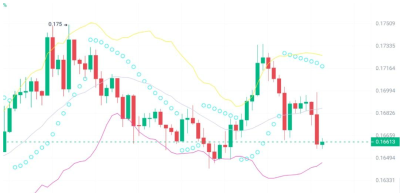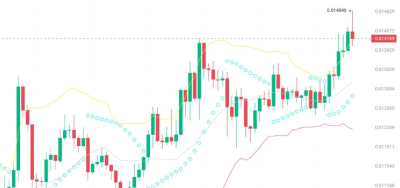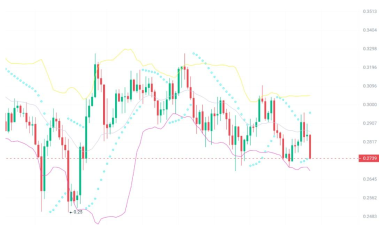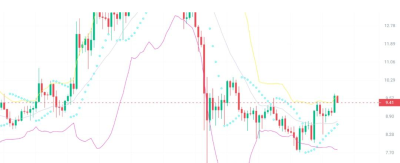Cryptocurrency (English: Cryptocurrency, often used in the plural Cryptocurrencies, also translated as cryptocurrencies, cryptographic currencies) is a medium of exchange that uses cryptographic principles to ensure transaction security and control the creation of transaction units. Cryptocurrency is a type of digital currency (or virtual currency). Bitcoin became the first decentralized cryptocurrency in 2009, and since then the term cryptocurrency has mostly referred to this type of design. Since then, several similar cryptocurrencies have been created, which are usually called altcoins. Cryptocurrencies are based on a decentralized consensus mechanism, as opposed to the banking and financial system that relies on a centralized regulatory system.
Cryptocurrency (English: Cryptocurrency, often used in the plural Cryptocurrencies, also translated as cryptocurrencies, cryptographic currencies) is a medium of exchange that uses cryptographic principles to ensure transaction security and control the creation of transaction units. Cryptocurrency is a type of digital currency (or virtual currency). Bitcoin became the first decentralized cryptocurrency in 2009, and since then the term cryptocurrency has mostly referred to this type of design. Since then, several similar cryptocurrencies have been created, which are usually called altcoins. Cryptocurrencies are based on a decentralized consensus mechanism, as opposed to the banking and financial system that relies on a centralized regulatory system.
Virtual assets are a form of asset that exists in digital form. They usually do not exist in physical form, but have actual economic value.
This type of asset includes various types, the most common of which is digital currency, such as Bitcoin, Ethereum and other cryptocurrencies. They are based on blockchain technology, are encrypted to ensure security, and can be used for trading, investment or as a means of value storage. So the essence of Bitcoin is a virtual digital asset.
The characteristics of virtual assets are that they usually rely on digital platforms for creation, trading and storage, and their value is affected by factors such as market demand, scarcity and user trust.
Before 2024, Trump had always been skeptical of cryptocurrencies, and once wrote on Twitter, "We only have one real currency in the United States - it's called the dollar" to express his disapproval of cryptocurrencies.
He believes that cryptocurrencies themselves have no real value and may encourage various criminal activities. However, this year, Trump's attitude suddenly took a 180-degree turn, strongly supporting cryptocurrencies, and promised that if elected, he would make the United States the capital of cryptocurrencies. This is also the reason behind why Bitcoin rose immediately after Trump's election.
Trump once said at this year's Bitcoin Conference that if elected president, he would fire Gary Gensler, chairman of the US SEC, and prevent the United States from selling its Bitcoin holdings, establish a "strategic Bitcoin reserve", reduce the sentence of Silk Road founder Ross Ulbricht, and prevent the US government from further developing CBDC.
Later, in a speech, he reiterated that he would make the United States the capital of cryptocurrency and would stop the crusade against cryptocurrency within an hour of taking office. All of these policies have contributed to the surge in Bitcoin.
Cryptocurrencies themselves have multiple risks
A notable feature of cryptocurrency is decentralization. Decentralization means that the management and control of cryptocurrencies do not rely on any single central authority, such as a government, bank, or other financial institution.
Instead, these digital assets typically rely on distributed ledger technology, or blockchain, for record keeping and maintenance. While this feature provides the advantages of transparency and tamper-proofing, it also brings many challenges.
First, the decentralized architecture makes it difficult to implement governance and supervision of cryptocurrencies. Without a centralized institution responsible for their operation, legal and regulatory frameworks face difficulties in dealing with these assets.
Governments often need to address complex issues such as cross-border transactions, anonymity, and trustlessness when formulating regulatory policies, which poses potential risks to global financial stability.
In addition, the decentralized nature also exacerbates the risk of market volatility. Without regulatory and policy intervention, the cryptocurrency market may experience drastic price fluctuations and speculative behavior. Risks such as large-scale market manipulation, bubble bursts, and insufficient liquidity are more difficult to manage in a decentralized environment.
Differences of opinion among different policy institutions
Unlike Trump, the Federal Reserve and the U.S. Securities and Exchange Commission (SEC) remain cautious about cryptocurrencies.
The Federal Reserve has been exploring how to deal with the rise of digital currencies and studying their possible impact on monetary policy and financial stability over the past few years. Although the Fed has not taken a direct crackdown, it remains vigilant about the potential financial risks and speculation of cryptocurrencies, and believes that if digital assets are not regulated, they may have unforeseen impacts on the integrity of the financial system.
At the same time, the U.S. Securities and Exchange Commission (SEC) has a stricter attitude towards cryptocurrencies. The SEC seems to be extremely wary of the cryptocurrency market and frequently takes action to investigate and enforce the market to protect the interests of investors and prevent fraud.
SEC Chairman Gary Gensler has repeatedly emphasized that there are a large number of unregulated securities in the cryptocurrency market and called on cryptocurrency trading platforms and projects to comply with existing securities laws. This may be one of the reasons why Trump promised to fire him once he takes office.
Therefore, the next policy direction depends on the result of multi-party game. How to balance the conflicts of interest between different institutions is also a difficult problem that Trump needs to face in the future.
Future direction: Bitcoin "rise" or bubble burst
Although Trump's support for cryptocurrencies is unprecedented, this does not mean that investing in Bitcoin will definitely yield high returns.
Judging from the current situation, the value of Bitcoin continues to climb to new historical highs, and there is a trend of "rising to become a mainstream investment product", but the rise in currency value caused by policies depends largely on the degree of implementation of these policies in the future. If they are all on paper, then it will definitely lead to a decline in currency value in the end.
Secondly, the current global economic situation is complex and severe, and countries are facing multiple challenges such as inflationary pressure, geopolitical conflicts, and slowing economic growth. Against this background, governments have different attitudes towards cryptocurrency investment, forming significant policy differences, and these policy positions will ultimately have a profound impact on the value of cryptocurrencies.
100x cryptocurrencies worth investing in the bull market in 2024!
1.DOGE
Dogecoin (DOGE) is a light-hearted cryptocurrency based on the popular "doge" online meme, which is based on a Shiba Inu. Unlike Bitcoin, which is designed to be scarce, Dogecoin is numerous and new coins are constantly being mined. It was launched in 2013 and was originally a mimic of other cryptocurrencies, but it already has a loyal community and can be used for online payments.
Dogecoin saw a sharp 10% price increase in May, though it still fell short of investor expectations when the market began to recover a few days ago. Currently, Dogecoin is priced at $0.1649 with a market cap of $23.8 million. However, June is expected to bring significant changes. As the market recovers and investor enthusiasm rises, Dogecoin is expected to rise significantly, possibly repeating the rally in March 2024, when Dogecoin soared to $0.2201, about 1.5 times its current value. Despite the recent setback, Dogecoin remains the most popular meme coin, ranking 8th on CoinMarketCap.
- BOME
Book of Meme (BOME) is a two-part project: a cryptocurrency (the BOME token) and an effort to create a permanent record of the network's memes on the blockchain. The BOME token itself runs on the Solana blockchain and aims to be a meme-themed currency. The larger goal is to create a “Book of Meme” that stores meme information on a decentralized network, ensuring the survival of memes and fostering a new social media experience.
The price of Book of Meme (BOME) has long been depressed, but this is about to change as the token has shown a steady recovery throughout the month. In the past 24 hours, BOME has surged 4% to $0.01288 with a market cap of $888,652,516.
Initially, BOME experienced a significant boom, with its price peaking at $0.02805 shortly after its launch. However, this high was short-lived as the token quickly entered a sideways trading pattern with no clear recovery or peak. Looking ahead to June, BOME is expected to climb to unprecedented highs, and now is a good time to invest as prices are still relatively low.
- SLERF
SLERF is a Solana-based meme coin that has gained notoriety for its sloth mascot and dramatic launch. After raising $10 million in a successful presale, the developers accidentally burned those funds by sending them to an address that could not be recovered. Despite the rocky start, SLERF’s price has surged to become the top Solana meme coin. However, due to its meme-based nature and the inherent volatility of such currencies, its future remains uncertain.
Since its launch, SLERF’s price has been steadily declining. However, the SLERF-themed meme coin initially had a significant impact, surging to a high of $1.37 and is currently 78% higher than its current value. Currently, SLERF is priced at $0.2995 and has a market cap of $149,776,986, up 10% on both metrics.
Despite the decline, Solana-based meme coin SLERF remains in high demand. With the shift in market trends and Bitcoin’s price rising after the halving, SLERF is expected to soar to new heights.
4.APT
The Aptos blockchain has hit a new milestone by processing over 115 million transactions in 24 hours. With this record, the chain broke the industry record for the most transactions registered by an L1 platform, previously set by SUI. It is speculated that the surge was due to the launch of Tapos, a money-making game. Data from Coinglass shows that Apots' transaction volume far exceeds that of the Solana blockchain.
Aptos user transaction volume hit an all-time high, and APT's price is expected to rise in the long term. APT price previously rebounded from the low key support level of $8 and has now entered a clear uptrend. The price is receiving bullish pushes regularly, so it is closer to testing the next key resistance level of $9.71.
After setting a mid-term high of $18-$19, Aptos price triggered a sharp pullback, which seemed to be a massive rejection. However, after the recent rebound, the level has started to rise along the lower trendline, acting as a strong support. The price has approached one of the key resistance levels and another bullish push is expected to push this level above the next key range at $11.






